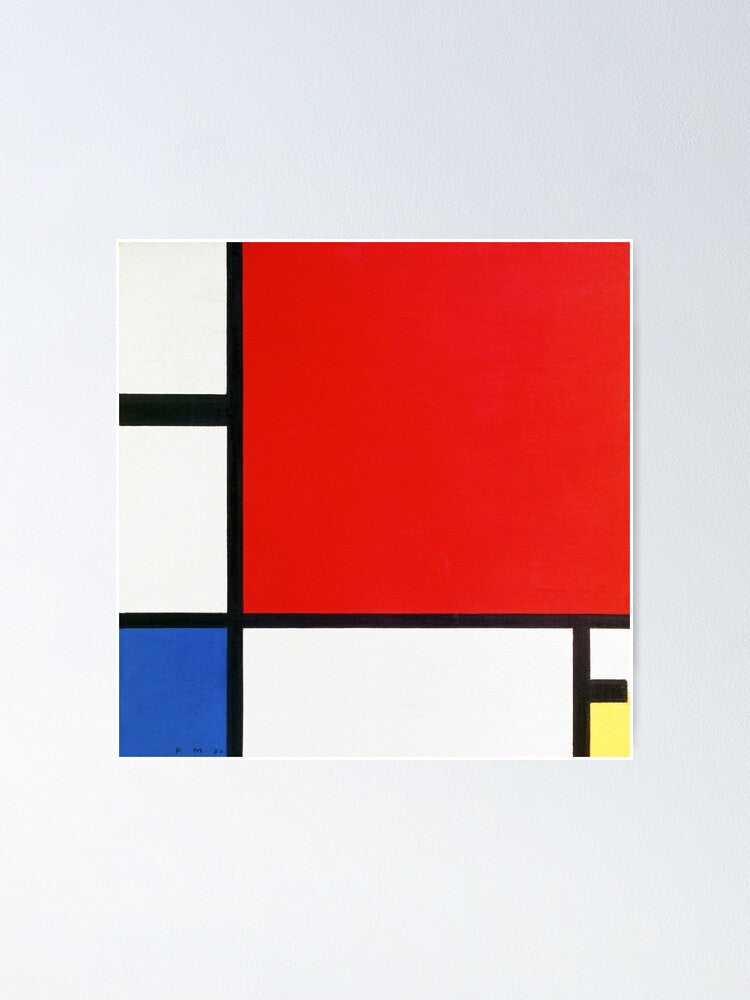
Piet Mondrian – Composition with Red, Blue, and Yellow (1930): Iconic Abstract Painting of the De Stijl Movement
Piet Mondrian’s Composition with Red, Blue, and Yellow (1930) is a masterclass in abstraction and minimalism, embodying the principles of the De Stijl movement he co-founded. This painting is characterized by a strict grid of black lines and carefully balanced blocks of primary colors—red, blue, and yellow—set against white space. Mondrian’s work demonstrates that simplicity and precision can evoke profound harmony and aesthetic clarity.
Rather than depicting objects or landscapes, Mondrian aimed to express universal beauty through pure abstraction. He believed that art should reflect a spiritual order and balance, and that the reduction of forms to lines and color blocks could convey this deeper truth. Composition with Red, Blue, and Yellow exemplifies this philosophy, with its clean geometric structure and dynamic yet harmonious arrangement of colors.
Mondrian’s approach influenced countless modern and contemporary artists, designers, and architects. His ideas about balance, proportion, and the emotional impact of color continue to resonate in graphic design, interior design, and even digital media. This painting is not just a visual artwork—it is a study in harmony, proportion, and the power of abstract form.
Composition with Red, Blue, and Yellow remains a cornerstone of abstract art, illustrating how a few simple lines and colors can communicate universal ideas and timeless beauty. For art lovers, it is a must-see masterpiece that demonstrates the transformative potential of abstraction.
Join our latest collection
